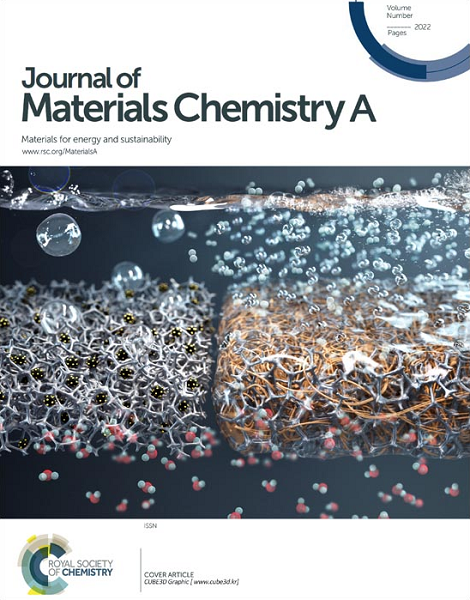A Fluoride-Incorporated Composite Electrolyte Enabling High-Voltage All-Solid-State Sulfide-based Lithium Batteries
IF 10.7
2区 材料科学
Q1 CHEMISTRY, PHYSICAL
引用次数: 0
Abstract
All-solid-state lithium batteries (ASSLMBs) employing sulfide electrolytes exhibit remarkable energy density and inherent safety, and the integration of high-voltage cathode materials further enhances their advantage in performance. Nevertheless, the interfacial degradation between high-voltage cathodes and sulfides during long cycling remains a significant challenge. Herein, a biphasic composite electrolyte integrating halide electrolyte Li3AlF6 with sulfide electrolyte Li5.5PS4.5Cl1.5 is constructed to combine high ionic conductivity and high-voltage adaptability in ASSLMBs. Specifically, the biphasic electrolyte obtained via ball-milling retains ionic conductivity exceeding 1 mS cm-1. Furthermore, Li3AlF6 effectively mitigates surface degradation and irreversible phase transitions in the LiCoO2 cathode material at high voltages by enhancing interfacial charge transfer kinetics. As a result, ASSLMBs integrating the biphasic electrolyte and uncoated LiCoO2 cathode deliver an ultra-high specific capacity of 161.1 mAh g-1 at 0.1C (4.2 V vs. Li-In), excellent rate performance of 128.3 mAh g-1 at 1C, and long-term cyclability retaining 86.0 mAh g-1 after 100 cycles. This discovery underscores the significant efficacy of the halide compositing strategy in improving the electrochemical stability of sulfide electrolytes. It also offers valuable insights for the design of ASSLMBs tailored to high-voltage applications.一种可实现高压全固态硫化物基锂电池的含氟复合电解质
采用硫化物电解质的全固态锂电池(asslbs)具有显著的能量密度和固有安全性,高压正极材料的集成进一步增强了其性能优势。然而,在长时间循环过程中,高压阴极和硫化物之间的界面降解仍然是一个重大挑战。本文构建了卤化物电解质Li3AlF6和硫化物电解质Li5.5PS4.5Cl1.5的双相复合电解质,以结合asslbs的高离子电导率和高电压适应性。具体来说,通过球磨获得的双相电解质保持了超过1ms cm-1的离子电导率。此外,Li3AlF6通过增强界面电荷转移动力学,有效地减轻了LiCoO2阴极材料在高压下的表面降解和不可逆相变。因此,集成了双相电解质和未涂覆LiCoO2阴极的asslmb在0.1C时具有161.1 mAh g-1的超高比容量(4.2 V vs. Li-In),在1C时具有128.3 mAh g-1的优异倍率性能,并且在100次循环后保持86.0 mAh g-1的长期可循环性。这一发现强调了卤化物复合策略在改善硫化物电解质电化学稳定性方面的重要功效。它还为设计适合高压应用的asslmb提供了有价值的见解。
本文章由计算机程序翻译,如有差异,请以英文原文为准。
求助全文
约1分钟内获得全文
求助全文
来源期刊

Journal of Materials Chemistry A
CHEMISTRY, PHYSICAL-ENERGY & FUELS
CiteScore
19.50
自引率
5.00%
发文量
1892
审稿时长
1.5 months
期刊介绍:
The Journal of Materials Chemistry A, B & C covers a wide range of high-quality studies in the field of materials chemistry, with each section focusing on specific applications of the materials studied. Journal of Materials Chemistry A emphasizes applications in energy and sustainability, including topics such as artificial photosynthesis, batteries, and fuel cells. Journal of Materials Chemistry B focuses on applications in biology and medicine, while Journal of Materials Chemistry C covers applications in optical, magnetic, and electronic devices. Example topic areas within the scope of Journal of Materials Chemistry A include catalysis, green/sustainable materials, sensors, and water treatment, among others.
 求助内容:
求助内容: 应助结果提醒方式:
应助结果提醒方式:


